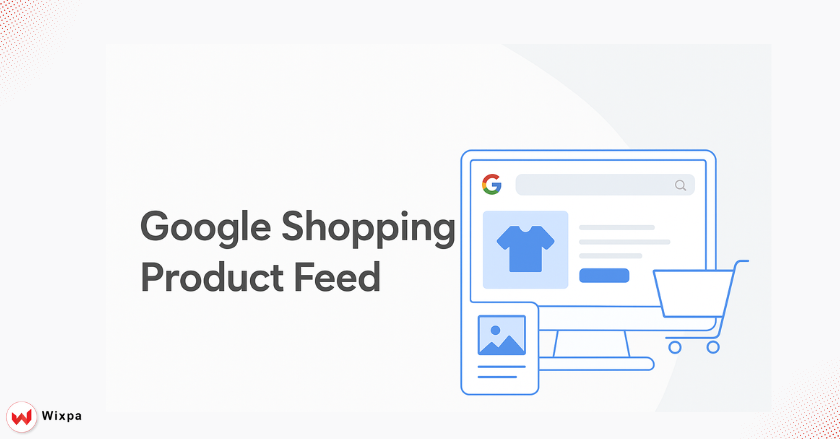Google Shopping Feed Optimization: 2025 Expert Guide
In today’s digital-first economy, visibility is everything. Whether you’re a Shopify seller in New York, a WooCommerce merchant in London, or a Magento retailer in Dubai, your success often depends on how well your products appear in Google Shopping. The backbone of this visibility is your product feed, and without proper Google Shopping feed optimization, you’ll struggle to reach the right customers.
Having managed campaigns for multiple e-commerce brands, I’ve seen firsthand how small improvements in feed quality can lead to significant growth. In this guide, I’ll explain what feed optimization is, why it matters in 2025, and how to execute it for maximum performance.
What is Google Shopping Feed Optimization?
Google Shopping feed optimization is the process of improving the accuracy, completeness, and relevance of your product data feed so Google can match your items to customer searches.
A typical shopping feed Google file includes attributes like product title, description, price, availability, brand, GTIN, and images. Optimization ensures each of these fields is clear, keyword-rich, and aligned with search intent.
For example, instead of listing “Running Shoes,” an optimized title would be “Nike Air Zoom Pegasus 40 Men’s Running Shoes, Size 10 – Black.” This level of detail not only improves rankings but also increases click-through rates.
Why Google Shopping Feed Optimization Matters in 2025
E-commerce has evolved. Customers want personalized, local, and accurate shopping experiences. A poorly optimized Google Shopping product feed means:
- Your products won’t show up for high-intent searches.
- You’ll pay more per click with lower conversion rates.
- Your competitors with optimized feeds will consistently outrank you.
For instance, one of my clients in Toronto was struggling with low impressions. After optimizing their product titles, adding GTINs, and improving descriptions, impressions grew by 70% in just two months, with sales doubling. That’s the power of feed optimization.
Key Elements of a High-Quality Shopping Feed
When managing a feed for Google Shopping, these areas deserve the most attention:
Product Titles
Include brand, product type, attributes (color, size, material), and keywords.
Descriptions
Add unique, keyword-rich copy that matches user search behavior. Avoid generic text copied from manufacturers.
Images
High-resolution, professional images without watermarks or logos. Lifestyle photos often perform better than plain product shots.
Categories
Assign correct categories from Google’s taxonomy. Mislabeling hurts discoverability.
Pricing & Availability
Keep prices, discounts, and stock status updated in real time. Out-of-date feeds lead to disapprovals and customer frustration.
How to Optimize Google Shopping Feed Step by Step
Here’s a structured approach to making your feed stand out in 2025:
Step 1: Audit Your Current Feed
Check Merchant Center diagnostics for errors, warnings, and disapprovals.
Step 2: Improve Titles and Descriptions
Use keyword research tools like Google Keyword Planner or SEMrush to discover search terms. Include these naturally in your product copy.
Step 3: Add Unique Identifiers
GTINs, MPNs, and brand details improve trust and ensure broader reach.
Step 4: Enhance Product Images
Upload multiple images from different angles, include close-ups, and ensure mobile-friendliness.
Step 5: Use Custom Labels
Segment products by margin, season, or promotion. This allows smarter bidding in Google Ads campaigns.
Step 6: Automate Updates
Set automatic feed uploads via Content API or eCommerce plugins to keep data accurate.
Advanced Strategies for Feed Optimization
Beyond the basics, here’s how top-performing e-commerce brands refine their feeds:
- Local Targeting: Add region-specific details like “Free 2-Day Shipping in Chicago” or “Available in Dubai Mall Store.” This boosts GEO relevance.
- Promotions & Ratings: Enable Merchant Promotions and collect product reviews. Both improve CTR significantly.
- Performance Data Analysis: Track queries that trigger your products, then adjust titles or bids accordingly.
- Voice Search Optimization: As more shoppers use queries like “Where can I buy affordable laptops near me?”, write descriptions in natural language.
- Seasonal Feeds: Prepare separate optimized feeds for Black Friday, Christmas, or Ramadan campaigns.
Managing Google Shopping Feeds Efficiently
Feed management can be overwhelming, especially for large catalogs. Here’s what works:
- Shopify and WooCommerce Plugins: Sync product data directly to Merchant Center.
- Feed Management Tools: Platforms like Wixpa, DataFeedWatch, or GoDataFeed allow bulk edits and optimization.
- Regular Monitoring: Weekly checks in Merchant Center prevent errors from snowballing.
- Testing and Iteration: A/B test different titles, pricing strategies, and images for continuous improvement.
Common Challenges in Shopping Feed Optimization
Even experienced marketers run into obstacles. The most frequent issues include:
- Product Disapprovals: Caused by mismatched prices, policy violations, or missing fields.
- Low Click-Through Rates: Often due to generic titles, poor images, or irrelevant targeting.
- Inventory Issues: Running ads on out-of-stock items wastes budget.
- Data Overload: Managing thousands of SKUs manually leads to errors.
Solving these requires both technical know-how and the right automation tools.
Future Trends in Google Shopping Feed Optimization
Looking ahead to 2025 and beyond, these trends will shape feed optimization:
- AI-Driven Suggestions: Google Merchant Center will increasingly recommend optimizations automatically.
- Hyper-Personalization: Feeds will adapt dynamically to user preferences, location, and browsing behavior.
- Cookieless Commerce: With privacy changes, structured feeds will play a bigger role in campaign targeting.
- Integration with Social Commerce: Optimized feeds won’t just power Google but also Meta, TikTok, and Pinterest product ads.
Conclusion
Google Shopping feed optimization is no longer optional it’s a competitive necessity. From keyword-rich titles and professional images to automation and local targeting, every detail in your feed impacts visibility, ad performance, and sales.
In my experience, brands that commit to continuous feed optimization see measurable results: lower CPCs, higher ROI, and stronger customer trust.
If your products aren’t performing as expected, start with a thorough feed audit today. The difference between a basic feed and an optimized one can mean the difference between stagnant sales and breakthrough growth in 2025.
FAQs on Google Shopping Feed Optimization
1. What is Google Shopping feed optimization?
It’s the process of improving product feed data titles, descriptions, images so your items rank better and convert more in Google Shopping.
2. How do I set up a Google Shopping feed?
You’ll need a Merchant Center account, verify your site, create a product feed in Google Sheets, XML, or API, and upload it.
3. How can I optimize my Shopping feed for better results?
Use keyword-rich titles, detailed descriptions, correct categories, professional images, and update pricing regularly.
4. Why are my products not showing on Google Shopping?
Common reasons include disapproved products, missing GTINs, low-quality images, or poor feed optimization.
5. Can I automate my Google Shopping feed optimization?
Yes. Tools like DataFeedWatch or plugins for Shopify/WooCommerce help automate updates and bulk optimizations.



